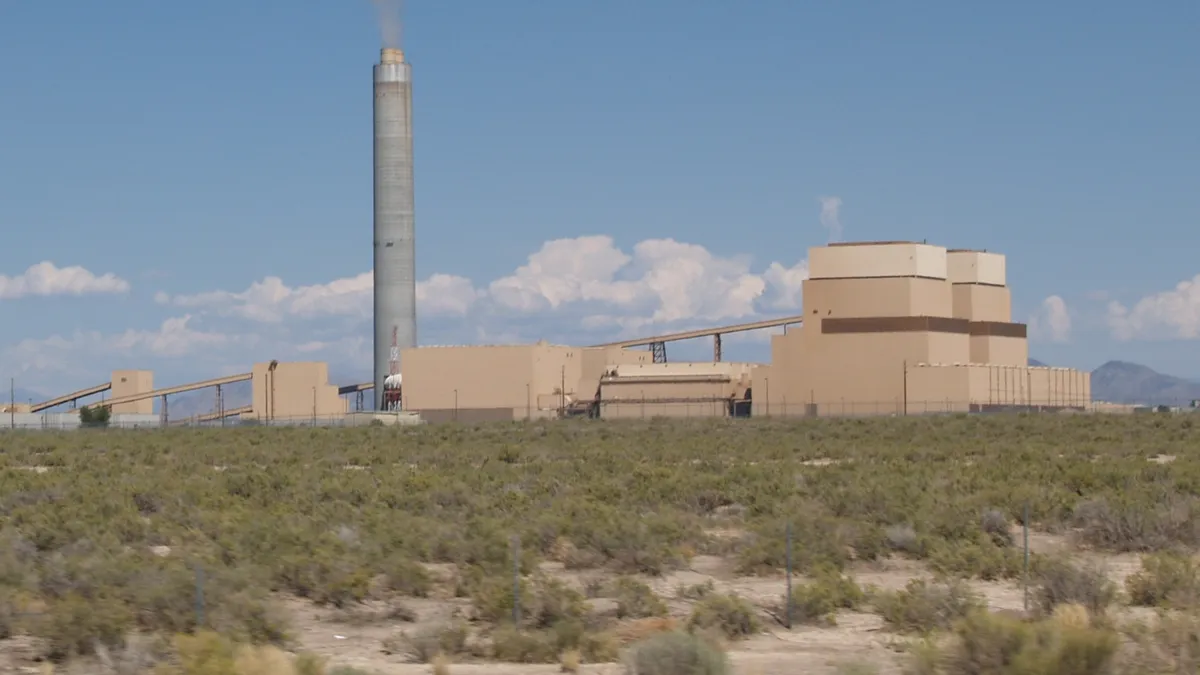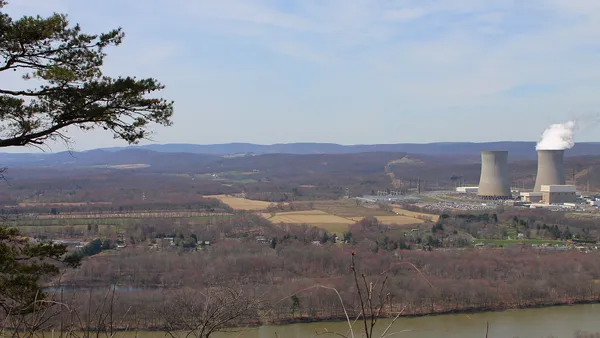Dive Brief:
-
Los Angeles' municipal utility is planning to convert a Utah power operation from coal to natural gas, to 100% hydrogen by 2045.
-
Hydrogen will be capable of making up 30% of an 840 MW natural gas plant's generation on day one of its operation beginning in 2025, according to the plan presented by the Los Angeles Department of Water and Power (LADWP) on Tuesday. The gas-fired generation is replacing a 1,800 MW coal plant, which will cease operations in 2025.
-
The plant would be the first power plant in the world to run on 100% hydrogen produced through electrolysis. LADWP said the project is necessary in order for the city to meet the state's 100% clean power by 2045 goal.
Dive Insight:
Europe has traditionally been ahead of the U.S. in optimizing hydrogen power on its grid. The only other 100% hydrogen plant in the world is operated by Enel in Venice, Italy, produced through reforming the methane in the fuel through a steam reaction, then removing excess carbon until left with pure hydrogen.
That application currently dominates U.S. production according to the Department of Energy, though both technologies are seeing more investment, Navigant Energy Management Consultant Jan Vrins told Utility Dive in June.
"We see significant investments that are being made right now in some of the technologies to produce hydrogen," he said. "A lot in Europe, and I think we'll see it probably coming to the U.S. pretty quickly as well."
The process is "very ambitious, but certainly something that is doable," California Independent System Operator Vice Chair Angelina Galiteva said at a GridConnext conference in Washington, D.C. on Wednesday. "Hey, science fiction of the future is coming and L.A. is leading the way. Hopefully they succeed."
Hydrogen can also be produced through electrolysis which separates water into hydrogen and oxygen through electricity, which is LADWP's plan. Controversy around this method argues the amount of power needed to produce hydrogen outweighs the benefits, particularly if the power comes from carbon-emitting sources.
But LADWP's Intermountain Power Project has unique geological attributes that make it the ideal candidate to take on this task, according to the utility.
The plant transmits power to municipalities across Nevada and California as well as Utah, and is interconnected to 370 MW of wind, with 1,500 MW more under discussion, 2,300 MW of solar in the queue and lots of potential for geothermal as well, to power the electrolysis process.
It also sits directly above an underground salt dome that would be able to store high pressure hydrogen not immediately burned by the plant for up to a year, allowing for more seasonal dispatch complimenting wind and solar, the utility said in its presentation.
The turbines on this plant will be capable of hydrogen-mixing on day one, and will incrementally make up more of the plant's fuel mix, being capable of up to 40% from 2031-2035, 50% through 2040 and 75% until its 100% by 2045 benchmark.
A "technological barrier" prevents the plant from powering by all hydrogen sooner, LADWP told Utility Dive. The economics of electrolysis have never been tested at this scale, but some environmentalists are cautiously optimistic.
"It's yet to be fully proven out as a cost effective option, but the technology is feasible," Peter Miller, director of the climate and clean energy program for the western region at the Natural Resources Defense Council, told Utility Dive. "There's a variety of options out there and we should keep them all on the table at this point."
"We think that a renewable hydrogen project would be a welcomed addition to the renewable portfolio of LADWP," Luis Amezcua, Sierra Club senior campaign representative for California told Utility Dive, adding that "it's looking like a lot of industry folks are really committed to develop [the] technology."
California is required to power 100% of its electricity by carbon-free power by 2045, and has faced unexpected issues with its low-carbon baseload generation in recent years. The San Onofre nuclear plant in 2012 was shut down after a small radiation leak was discovered and the state's largest natural gas storage facility, Aliso Canyon, had a gas leak in 2015 that facilities still have not bounced back from.
"The biggest problem right now that we are facing [is] it's always about Plan B," said Galiteva. "Many times we stay up at night and we say, 'Okay, what is our plan B? Have we thought of everything that could possibly happen?' And twice now we haven't."
The fuel is potentially beneficial to the power sector from that standpoint — the need for dispatchable, carbon-free power that many say we won't have enough of if our remaining nuclear units go offline — but could also save gas companies from future stranded assets.
"There is ... a future for the gas grid in terms of hydrogen," said Galiteva.
General Electric, which has pinned a large portion of its investment in natural gas in recent years, has said that converting natural gas turbines to hydrogen has more promise than carbon capture in allowing infrastructure investments to remain viable. Those investments include natural gas pipelines, which some fear will leave investors with stranded assets over the next decade as traditional generation is phased out, but could transport hydrogen just as easily, analysts have said.
LADWP said it is also exploring potential carbon capture applications for the plant and is in discussion with several companies about potential pilot programs, in order to cut down on the plant's emissions between 2025 and 2045.
This post has been updated to clarify GE has said its natural gas turbines could transition toward burning hydrogen.













